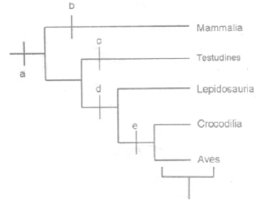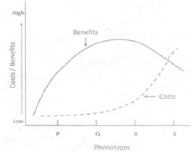 Multiple Choice Questions
Multiple Choice QuestionsTwo new plant species, A and B, were described in 1872. Subsequently it was found that the type for species A was never designated and for species B there was one specimen designated as type but missing. As per International Code of Botanical Nomenclature (ICBN), typification should be
Neotype for A only
Neotype for A and lectotye for B
Neotypes for both and B
Lectotype for both A and B
B.
Neotype for A and lectotye for B
The type (holotype, lectotype, or neotype) of a name of a species or infraspecific taxon is either a single specimen conserved in one herbarium or other collection or institution.
Assume a new sub‐species Ficus callosa subsp microcarpa has been published by Jacobs. The nomenclature of the resulting entities would be
F callosa and F. callosa subsp. Microcarpa Jacobs
F. callosa subsp. Mocrocarpa Jacobs and other yet to be named subspecies of F. callosa
F. callosa subsp. Callosa Jacobs and F. callosa subsp. Microcarpa Jacobs
F. callosa subsp. Callosa and F. callosa subsp. Microcarpa Jacobs
In a lake ecosystem, bottom up effects (B) refers to control of a lower trophic level by the higher trophic levels and top down effects (T) refer to the opposite. In a lake with three trophic levels – Phytoplankton (P), Zooplankton (Z) and Carnivore (C),
P and C are controlled by B, and Z is controlled by T
P, Z and C are all controlled by T
P is controlled by B, Z is controlled by T and C is controlled by B
P is controlled by T, Z is controlled by B and C is controlled by T
Identify the apomorphic characters marked in the cladogram:

A‐ amniotic egg; b‐ 4 chambered heart; c‐anapsidian skull; d‐diapsidian skull; e‐synapsid skull
A‐amniotic egg; b‐synapsidian skull; c‐4 chambered heart; d‐anapsidan skull; e‐diapsidan skull
A‐4 chambered heart; b‐synapsid skull; c‐aminiotic egg; d‐diapsidan skull; eanapsidan skull
A‐amniotic egg; b‐synapsidan skull; c‐anapsidan skull, d‐diapsidan skull; e‐4chambered heart.
What will be the approximate effective population size in a panmictic population of 240 with 200 females and 40 polygamous males?
160
133
63
67
An animal was first maintained in a constant environmental condition for several days until a consistent biological rhythm (B) was established. The animal as then exposed to an experimental physical rhythm (E) which modulate the phase and period of B. However, upon withdrawal of E, the B gradually regained its pattern of pre‐exposure condition. Form these observations which one or more of the following should be the most logical interference?
A. E is a zietgeber
B. E is a masking agent
C. E cause entrainment of B
D. B is conditioned to E
The correct answer is
A and C
B and D
B only
D only
Show the graph below are the fitness costs and benefits of four alternatives behavioral phenotypes (P, Q, R, S). Given sufficient evolutionary time, which phenotype(s) is likely to evolve as an adaptation?

Q and R
Q only
P, Q and R
S only
The following geological areas mark the advent of important events in the history of earth origin of terrestrial plants, origin of mammals and breakup of the
lad masses Pangea:
(a). Early Cambrian
(b). Late Devonian
(c). Late cretaceous
(d). Late Jurassic
Identify the correct match of the events with the geological era:
Origin of terrestrial plants (c); origin of mammals (d); break up of Pangaea (a)
Origin of terrestrial plants (b); origin of mammals (d); break up of Pangaea (c)
Origin of terrestrial plants (d); origin of mammals (c); break up of Pangaea (b)
Origin of terrestrial plants (b); origin of mammals (c); break up of Pangaea (d)
Inner plates of the solar system are rocky, whereas outer planets are gaseous. One of the reasons for this is that
Solar heat drove away the gases to the outer region of the solar system.
Gravitational pull of the sun pulled all rocky material to the inner solar system.
Outer planets are larger than the inner planets.
Comets delivered the gaseous materials to the outer planets
The number of craters observed due to meteoritic impacts during the early stages of formation, is less on the earth than that on the Moon because,
Formation of craters on the Earth was difficult due to the presence of hard rocks.
Impacting bodies on the Earth were smaller in size.
Craters on the earth are now covered by ocean water.
Earlier craters are not preserved due to continuous modification of Earth’ssurface by geological processes.
